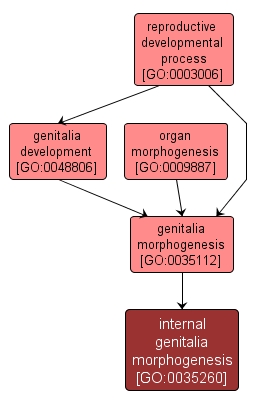| Desc: |
The process by which the anatomical structures of the internal genitalia are generated and organized. The internal genitalia are the internal sex organs such as the uterine tube, the uterus and the vagina in female mammals, and the testis, seminal vesicle, ejaculatory duct and prostate in male mammals. |














